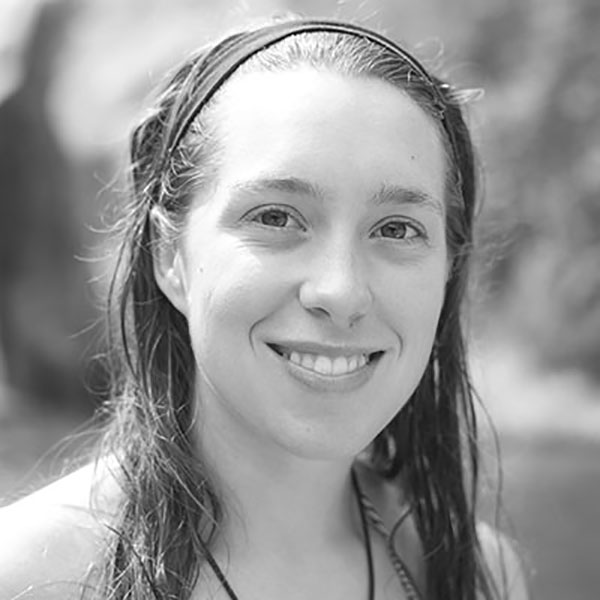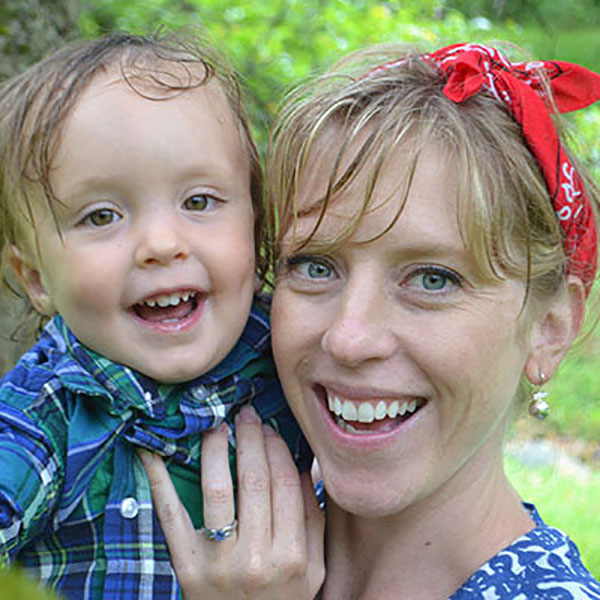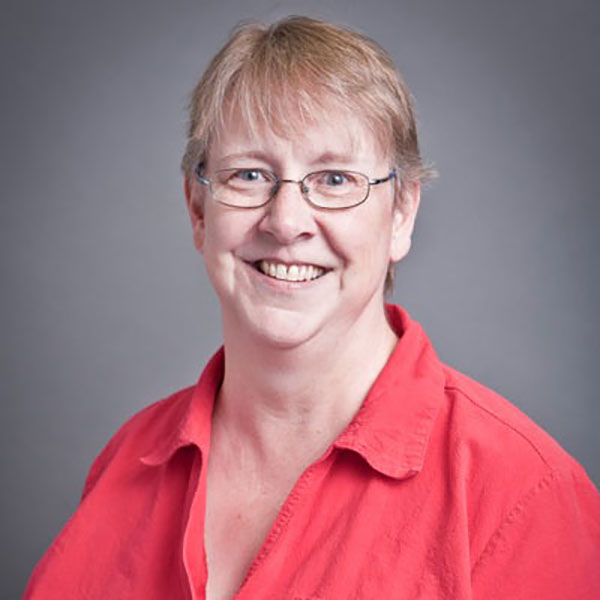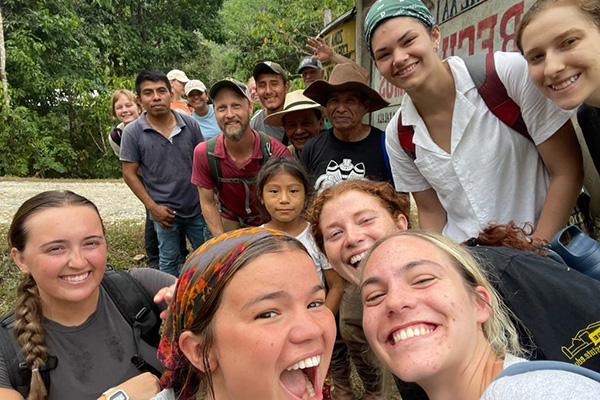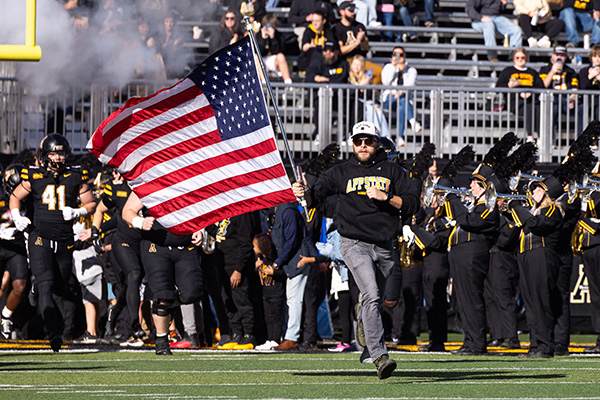In May, three faculty members took 15 students to Cuba for a multidisciplinary, study abroad course titled “Rhythm and Revolution: Exploring Music and Dance in Cuba.” The group committed to being travelers, not tourists and came away with an understanding of the island’s history, culture, politics and some of what Cubans experience each day.
Here are their reflections:
Ariel Bushel
Before the revolution, my grandmother lived in Cuba for a few years before moving to the U.S. Her description of Cuba was very helpful and I experienced the culture on a deeper level. I thought like both a foreigner and a native, while also appreciating the importance of family and community. Speaking to Cuban people with a slight language barrier was difficult but not impossible to overcome. Not being able to speak full sentences in Spanish opened up another form of communication full of expression rather than words.
The greatest difference I saw between the U.S. and Cuba was the idea of community rather than self. Cuba does not have the best technology, so family and friendships are their priority. However, in the U.S., we spend a lot of time being entertained by social media, TV and video games. Since being in Cuba, I have tried to value my relationships more by spending more time with my family and friends and being more selfless. I as well as my grandmother plan to return to Cuba in the near future to experience our journey together.
Jennie Flowers
Going to Cuba, I was excited and almost a little apprehensive. So many countries in this world have been Americanized; I was left with few expectations about what Cuba would be like, as it has had no involvement with the U.S. for decades. We went to study music and dance, and over the course of the trip I was submerged into the passionate and vivacious culture of Cuba.
“Communication can go beyond words… we were able to form bonds by sharing dance and music.”
Jennie Flowers, anthropology major
Despite all the wonderful exposure I received to the arts, one of the greatest things I learned was the universality among people. The language barrier and cultural difference were evident from the start of our trip. Cuba is a place where the past and the present have collided and it is a mixture of cars and architecture from the 20th century to today. Most of the people have very little but they are exemplary at making the most of it. Despite the difference between us and them, we were still able to make strong connections along the way. Communication can go beyond words, and we were able to form bonds with people by sharing dance and music with them. In three days a Korimakao the whole group had become very close with many of the employees there because despite coming from such different places we were able to find so much in common. Over the course of this trip I learned that no matter how different peoples lives can be we all share similar fears, joys, and dreams that make us all more similar than we realize.
Emily Daughtridge
Associate professor
Department of Theatre and Dance
Visiting the Korimakao artists’ collective, located in the environmentally challenging Cienega de Zapata swamp region, proved to be the highlight of our travels. Our interactions with the Kormiakao students and staff gave us opportunities to experience again the capacity artistic expression has to reveal humanity’s potential to transcend both difference and discomfort.
The Cubans were eager to connect and share with our group. Upon our arrival they welcomed us in the driveway with a dance theatre performance, breaking the ice and the proverbial fourth wall, splashing water and bringing excitement and relief to a hot day. Without a moment’s hesitation our students were integrated midstream into theatre improvisations, dance classes and music jams. Through these artistic mediums, the groups crossed barriers, exchanged experiences and formed instantly intimate bonds.
“Our students discovered when it comes to social dancing in Cuba, the paralyzing American fear of looking foolish is displaced. In Cuba, dance is for everyone.”
Emily Daughtridge, dance professor
The Korimakao artists are hardworking, passionate, talented people. In spite of, or perhaps because of, the lack of material goods, we found Cubans everywhere to be creative, resourceful and incredibly persevering.
Cuba is known for having generated unique styles of music and dance. Thus, learning about Cuba through dance seemed like an obvious choice, in addition to the understanding that culture, history and social constructs are embodied in dance. Our course encouraged students to make local to global connections by experiencing these elements both at home and abroad through ritual and traditional dance, social dance and concert dance forms, such as ballet and modern dance. In particular, our students discovered when it comes to social dancing in Cuba, the paralyzing American fear of looking foolish is displaced. Cubans are not concerned with how one moves, but rather that one moves. In Cuba, dance is for everyone.
Rachel Lax ’15
Cuba presented endless opportunity to learn and discover, but there were some things to overcome first. It was a daunting challenge for me, like many of my classmates, to communicate with those around us in a truly meaningful way, despite the (often times, significant) language barrier. This concern quickly dissolved as very nearly all of us had a little bit of Spanish, and being immersed in the language brought back many basics which allowed us to have some conversation. We also had each other, some with a decent grasp on the language, to help us all communicate and understand each other.
As a Global Studies major, this was an incredible experience that I really felt rounded out my undergraduate studies and experience. While my focus area was the Middle East, it was so interesting to study in a place that is similarly “off-limits” to many Americans (or was!). It was truly fascinating to see things from the inside of the country, and from several different perspectives on the inside. Seeing the way the country functions today, several decades following the communist revolution, was nothing short of mind blowing for me.
As someone who has studied different government structures, and other communist countries, it was very different than anything I’ve learned, read or studied before. It gave me a totally new and invaluable perspective on the way the world works around me. We are always told by those older and wiser than us (namely our professors) that nothing is as neat and tidy as it’s presented to us. That being said, even the places and events we study, that are presented in all of their complicated and messy glory, are infinitely more complex than what can be gleamed from a classroom. Going out into the world and making connections, discovering some of the nuances of the culture and the domestic and international power exchanges, is something I know will stay with me. While I am looking towards graduate school, and will probably not be studying Cuba specifically, the things I learned there are priceless to me in analyzing, understanding and working to better the world around me.
Josh Watson ’15
I think the most important thing I learned in Cuba was to not be afraid to dance. I’ve always thought of myself as a bad dancer, and I was kind of scared of going on a trip partially centered on dancing. We learned some basic salsa moves before the trip and at a small dance class early in the trip, and I felt okay about the easy moves, provided I was dancing with one person. I was woefully unprepared for the moment when, at our welcome party in Korimakao, the singer that I’d been sitting next to gleefully pointed at me and gestured at me to get up and dance, alone, in front of several dozen extremely talented dancers/artists/musicians.
“I’m not afraid to dance in front of people anymore, and I don’t think I’ll ever be scared of being in front of a crowd again.”
Josh Watson ’15, biology major
In about three seconds, I realized that the only thing that would look worse than my dancing would be refusing to dance, so I stood up and did my best to move with something resembling rhythm. Whatever I did must have been entertaining, because everyone loved it, and it didn’t take long for me to stop worrying about how bad I was. Afterwards, I felt that the whole experience was a great confidence boost. I’m not afraid to dance in front of people anymore, and I don’t think I’ll ever be scared of being in front of a crowd again.
McKenna O’Connell
Junior
Interdisciplinary Studies
Stop. Listen. What do you hear around you? In Cuba, often I could hear music in the distance, or the laughter of people enjoying each other’s company. Remember when you were younger and you would play outside and randomly connect with your friends? This still happens in Cuba. The beauty of socializing still exists in this country. Throughout my college career it has been challenging to connect with people without the use of social media, or a cell phone. My favorite days are those when I accidentally leave my phone at home. Some ways these days are challenging due to scheduling but ah! at last, I must rely on interactions and just being fully present with the people around me.
“Remember when you were younger and you would play outside and randomly connect with your friends? This still happens in Cuba.”
McKenna O’Connell, interdisciplinary studies major
One evening in Cuba, I believe it was a Friday, I walked along the Malecon which is a giant wall that runs along the sea in the colorful city of Havana. The wall was covered with people sitting around enjoying the ocean as it vigorously splashed and danced along the side. Everyone was chatting, dancing, playing music, sharing intimate time, fishing, and laughter floated throughout the air. Cars rushed by the sea wall and people continued their time just relaxing with one another. The people of Cuba rely on this time at the Malecon to see their friends and family. Seeing this reminded me of the importance that socializing, and doing so in an “unplugged” fashion, has on your mental status as well as the status of a community.
Doug Mulford
My situation in this Cuba trip was a bit different from the rest of the students. Technically, I participated in this study abroad as part of an internship to gain credit for a higher education class as part of my program. I am currently in graduate school at Appalachian, studying Spanish. However, my goals are ultimately to work in international studies or international education, where I could provide support for both domestic and international students interesting in participating in a study abroad program. With this specific trip, my internship focused on how to design and effectively complete a short-term study abroad experience. During this trip, I learned the ins and outs of creating such programs, as well as acted as an interpreter for the Cubans we interacted with throughout the trip.
I learned so much beyond academics, though. In addition to learning the policies behind creating these programs, I gained a deeper cultural understanding of an area so cut off from the U.S., even though it is just a mere 90 miles away. Meeting authentic, down-to-earth Cubans was the most rewarding part of this trip, as it allowed all of us as students, professors and just plain citizens of this world to see just how much in common we truly are despite what our opposing governments may think. We are part of this great change happening between these two countries, and although some elements of Cuban culture may be lost due to this newfound relationship and influence, ultimately it will lead us to a more globalized, international and just overall peaceful world. What an honor we have at Appalachian to have been a part of this change.
Courtney Baines Smith
Doctoral student
Educational Leadership
What I learned from Cuba was a bit different than what I was expecting to learn. As a student and teacher of sustainable development, I was aware that Cuba was ranked high on numerous sustainability indicators and often towards the top of lists highlighting “most sustainable countries.” I had watched and read numerous essays and stories describing how much we have to learn from Cuban ingenuity to prepare for the inevitable post-oil world. I was imagining seeing a vibrant urban agriculture scene, envisioning every home with their own version of a Cuban victory garden. While I cannot say that that version of Cuba does not exist, I can say that I did not see it during our 10-day, arts-focused visit to our full-of-life island neighbor.
“It seems our two countries approach economics on opposite extremes. I hope I can help work towards envisioning a future that takes the best of both.”
Courtney Baines Smith, doctoral student
Cubans definitely show ingenuity but for a different reason than I had imagined. They are because they have to be. I learned of children eating fried mops in the early ’90s because that was all that was available during the “special period” (yes, the cotton things that clean the floor) and that approximately 80 percent of food is imported. I witnessed nearly-empty highways because less than 10 percent of Cubans have a vehicle. While fewer cars may be a good thing because of reduced carbon emissions (antiquated “dirty” engines aside), I also learned that the transportation difficulties for Cubans means the young artist who lives and works at an artist cooperative 100 miles from home might only get to visit his/her family once a year, if that.
I learned that highly educated professionals (surgeons, teachers, professors) are watching as their neighbors climb the economic ladder by catering to tourists as restaurant owners, taxi drivers and hotel maids. The surgeon who saves his barber’s life gets a pat on the back yet has to pay a hefty portion of his meager monthly salary to get his hair cut. The barber earns more than the surgeon because a barber shop is on the short list of newly legal privatized businesses.
Merely romanticizing the Cuban way might not be the most accurate way to view our two countries’ differences. It seems our two countries approach economics (the making, distributing, and consuming of goods) on opposite extremes. I hope I can help work towards envisioning a future that takes the best of both.
Dr. Laurie Semmes
Associate professor
Hayes School of Music
Although this was my third trip to Cuba, it was my first with a group of students. It was incredibly rewarding to watch them experience Cuban culture and interact directly with Cuban people. I was inspired as I witnessed shifts in perspective among the students on various occasions, e.g., when a few students, who had been feeding their restaurant leftovers to stray cats, decided to share them with a man who was alone at a rest stop, and wordlessly watched him devour the food. I believe that the majority of our group had not considered themselves to come from affluent backgrounds, until they met a gregarious young doctor who earns less money than people employed by the Cuban service industry – and realized that he continues to work in his profession because of his passion for learning.
“I was inspired as I witnessed shifts in perspective among the students on various occasions.”
Laurie Semmes, music professor
Spending three days working in close contact with the musicians and dancers at an artists’ collective brought several of our students out of their “shells,” as they forged fast friendships that transcended the Spanish-English language barrier, largely because they discovered their shared passion for music, recording artists and many other things. Throughout the trip, our faculty team stressed the concept of being “travelers, not tourists,” and I truly believe that our group returned to the United States with a clear and positive comprehension of the value of doing so.
What do you think?
Share your feedback on this story.
- 4th in the nation – Number of students studying abroad among master’s degree institutions in 2012-2013
- 2nd in the nation – Students studying abroad short-term among master’s degree institutions in 2012-2013
Source: 2014 Open Doors report by International Institute of Education (IIE)
Traveling through Cuba with 15 students, 2 colleagues and no Internet
Oct. 9, 2015
A group of students and faculty learns about the history, culture and politics of Cuba – and some of what Cubans experience each day – during a study abroad experience.
Dec. 17, 2014
More and more Appalachian students are studying abroad, bringing continued recognition from the International Institute of Education.
Sept. 23, 2015
Images from a multidisciplinary, study abroad course titled “Rhythm and Revolution: Exploring Music and Dance in Cuba.” The program was led by faculty in dance, music and global studies.
The Office of International Programs assists App State in fulfilling its global engagement mission by working to develop awareness, knowledge, appreciation and respect of cultural differences — in both domestic and international contexts — in the university’s students, faculty and staff, as well as in the surrounding communities.
Dec. 19, 2012
Part of the reason we take our students to Cuba on these programs is we are trying to train them to be critical thinkers and policy shapers as we move in to the next century. Over the next couple of years we really expect to see some significant changes in Cuba and we trust that our students will be prepared to take advantage of the opportunities that present themselves.
About the Office of International Programs
Appalachian State University combines a strong liberal arts foundation with a comprehensive, pervasive and integrated commitment to global engagement. The Office of International Programs assists App State in fulfilling its global engagement mission by working to develop awareness, knowledge, appreciation and respect of cultural differences — in both domestic and international contexts — in the university’s students, faculty and staff, as well as in the surrounding communities. Learn more at https://international.appstate.edu.
About Appalachian State University
As a premier public institution, Appalachian State University prepares students to lead purposeful lives. App State is one of 17 campuses in the University of North Carolina System, with a national reputation for innovative teaching and opening access to a high-quality, cost-effective education. The university enrolls more than 21,000 students, has a low student-to-faculty ratio and offers more than 150 undergraduate and 80 graduate majors at its Boone and Hickory campuses and through App State Online. Learn more at https://www.appstate.edu.





